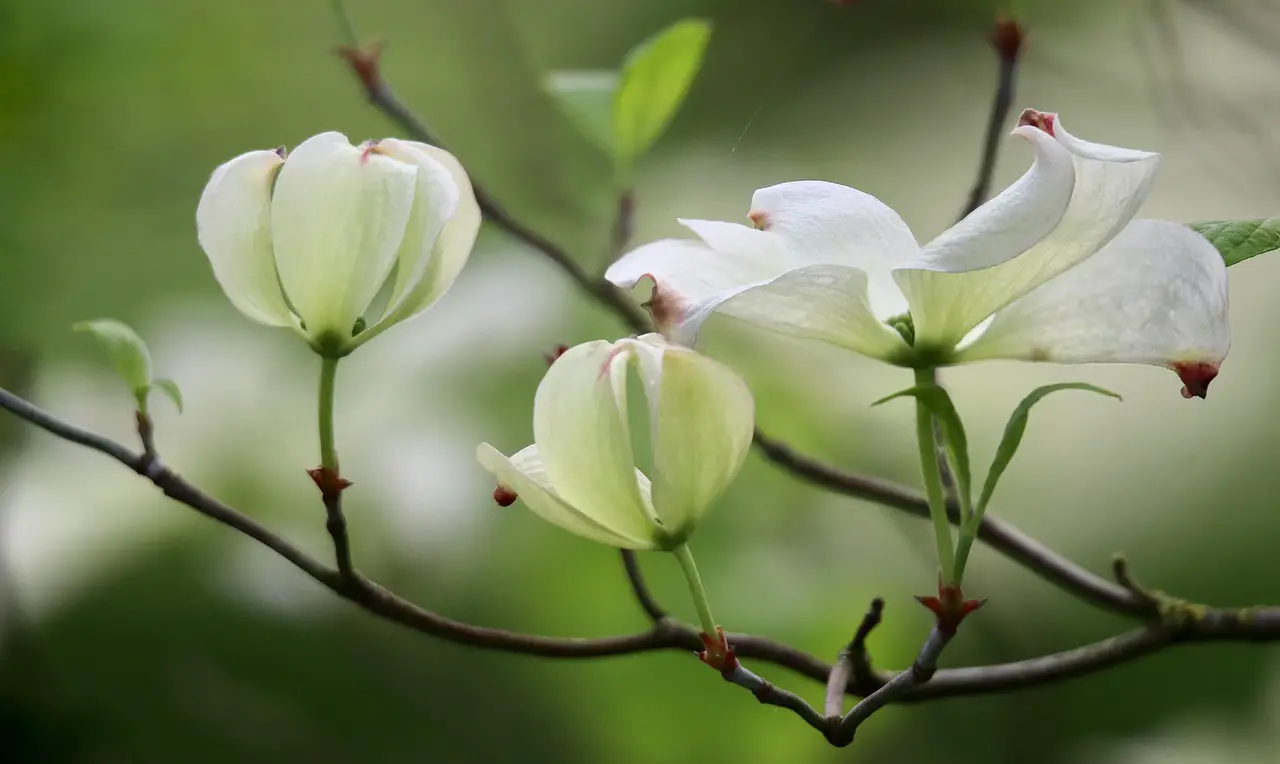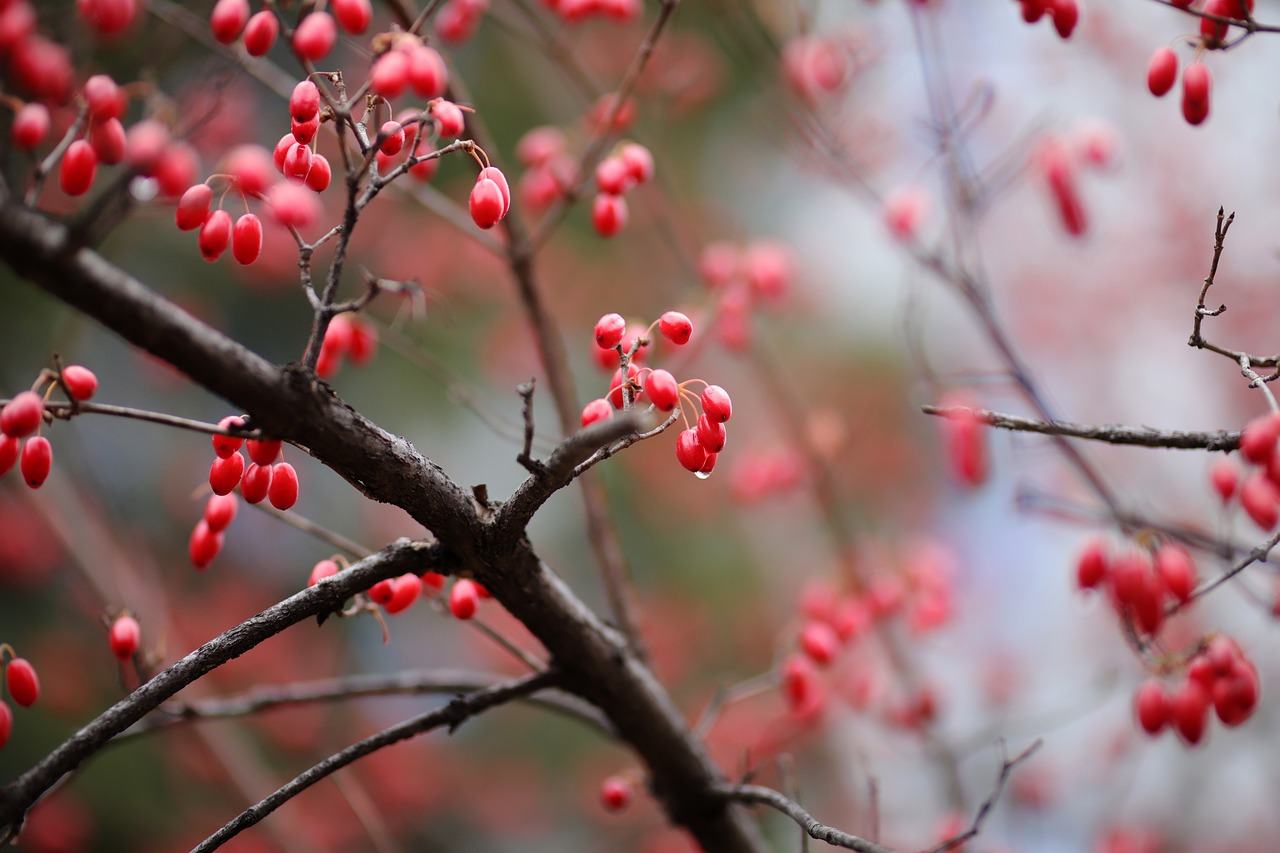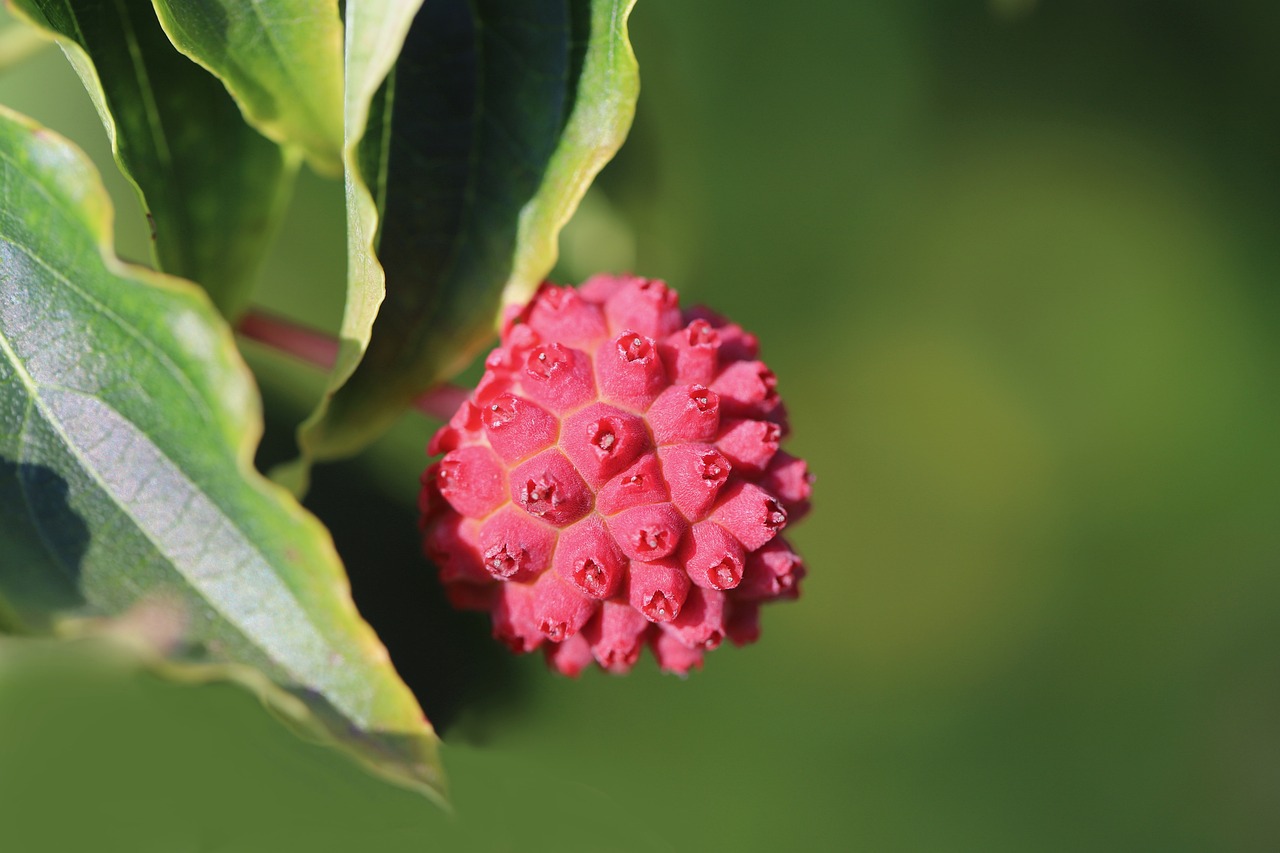The white dogwood tree (Cornus florida) typically grows at a moderate rate, averaging 1 to 2 feet per year under optimal conditions. As an understory species, it thrives in partial shade, which can influence its growth. Factors such as soil quality, moisture, and competition from other plants also play significant roles in its overall growth rate.
The White Dogwood tree (Cornus florida) typically grows at a moderate rate of about 1 to 2 feet per year. This growth rate contributes to its popularity as an understory tree, providing beautiful blooms in spring while thriving in partial shade.
Understanding the White Dogwood Tree
The White Dogwood tree, known for its stunning floral displays, is native to the eastern United States. It is a small to medium-sized deciduous tree that reaches heights of 15 to 30 feet. This tree is often found in woodlands and forests, where it can thrive under the canopy of larger trees. Its adaptability to various soil types and its preference for well-drained soil make it an excellent choice for many landscapes.

One of the key factors that influence the growth rate of the White Dogwood tree is the environment in which it is planted. The tree thrives in partial shade, which is ideal for understory blooms. When planted in optimal conditions, the White Dogwood can produce a spectacular display of white flowers each spring, making it a favored choice among gardeners and landscapers alike.
Growth Characteristics
The growth characteristics of the White Dogwood tree can be categorized into several factors, including maturity, flowering, and overall health. The following table outlines some important aspects of its growth:
| Aspect | Description |
|---|---|
| Height | 15 to 30 feet |
| Growth Rate | 1 to 2 feet per year |
| Flowering Period | April to May |
| Soil Preference | Well-drained, acidic soil |
| Sunlight Requirements | Partial shade to full sun |
The White Dogwood’s ability to adapt to different soil conditions is essential for its growth. It prefers acidic soils, which can be found in many understory environments. This preference helps in providing a suitable habitat for the tree and enhances its blooming capabilities.

Factors Influencing Growth Rate
The growth rate of the White Dogwood tree can be influenced by several factors:
- Soil Quality: Rich, well-drained soils promote faster growth.
- Water Availability: Adequate moisture is crucial, especially during dry spells.
- Light Conditions: While it can tolerate full sun, partial shade is ideal for optimal growth.
- Nutrient Levels: Fertilization can enhance growth rates when necessary.
- Pests and Diseases: Healthy trees grow better; issues like anthracnose can hinder growth.
Understanding these factors can help gardeners and landscape designers create optimal conditions for the White Dogwood tree. By ensuring the right balance of sunlight, water, and nutrient levels, one can encourage a flourishing tree that will enhance any garden or landscape.
Cultivation Tips
If you are considering planting a White Dogwood tree, there are several cultivation tips to keep in mind:

- Select a planting site that receives partial shade.
- Ensure the soil is well-drained and slightly acidic.
- Water regularly during dry periods, particularly in the first few years after planting.
- Monitor for pests and diseases, treating them promptly as needed.
- Consider adding mulch around the base to retain moisture and suppress weeds.
By following these guidelines, you can support healthy growth and vibrant blooms from your White Dogwood tree. With proper care, this beautiful tree can become a stunning focal point in any landscape.
Environmental Considerations for Growth
The environment plays a pivotal role in the growth and flowering of the White Dogwood tree. Various factors such as climate, soil type, and surrounding flora can significantly impact its development. Understanding these environmental considerations is essential for successful cultivation.
Climate Preferences
The White Dogwood tree flourishes in USDA hardiness zones 5 through 9. It requires a temperate climate with distinct seasons, including a cold winter to induce dormancy. High humidity and moderate rainfall are also beneficial for its growth.

- Temperature: White Dogwoods prefer temperatures ranging from 60°F to 75°F during the growing season.
- Cold Tolerance: These trees can tolerate winter temperatures down to 10°F, making them suitable for many regions in the eastern United States.
- Humidity: Moderate humidity levels help maintain the tree’s health and encourage blooming.
Soil Requirements
Soil quality is crucial for the growth of the White Dogwood tree. The tree prefers well-drained, slightly acidic soils with a pH level between 5.0 and 6.5. Below is a summary of key soil characteristics:
| Soil Characteristic | Ideal Condition |
|---|---|
| Drainage | Well-drained |
| pH Level | 5.0 to 6.5 |
| Nutrient Content | Rich in organic matter |
| Compaction | Loose, not compacted |
Adding organic matter such as compost can improve soil structure and nutrient content. This amendment not only enhances drainage but also provides essential nutrients for the tree’s growth.
Pests and Diseases
The White Dogwood tree is susceptible to various pests and diseases that can affect its growth and flowering capability. Early detection and proper management are vital to maintaining the health of the tree.
Common Pests
Several pests can threaten the White Dogwood tree:
- Dogwood Borer: This pest can cause significant damage by boring into the trunk.
- Aphids: These small insects suck sap from leaves, leading to wilting and discoloration.
- Scale Insects: They attach to branches and can weaken the tree by feeding on its sap.
Diseases to Watch For
A number of diseases can affect the health of the White Dogwood tree:
- Anthracnose: A fungal disease that causes leaf spots and can lead to premature leaf drop.
- Canker Diseases: These diseases can create dead areas on stems or branches, affecting overall health.
- Powdery Mildew: A fungal disease that appears as white, powdery spots on leaves, inhibiting photosynthesis.
Regular monitoring and applying appropriate treatments can help manage these issues. Keeping the area around the tree clean and well-maintained can also reduce the risk of infestations and infections.
The Role of Companion Planting
Companion planting is an effective strategy that can enhance the growth of the White Dogwood tree. By choosing compatible plants, gardeners can create a thriving ecosystem that benefits all species involved.
Benefits of Companion Planting
Companion plants can provide several advantages:
- Pest Control: Certain plants can deter pests that may harm the White Dogwood.
- Nutrient Enhancement: Some companions enrich the soil with nutrients that benefit nearby plants.
- Aesthetic Appeal: Pairing with colorful flowering plants can enhance visual interest in the landscape.
Recommended Companion Plants
When selecting companion plants for the White Dogwood, consider species that thrive in similar conditions:
- Ferns: They thrive in shady environments and complement the dogwood’s aesthetic.
- Azaleas: Their vibrant blooms contrast beautifully with the dogwood flowers.
- Bluebells: These spring-blooming perennials add color while cohabitating harmoniously.
By thoughtfully selecting companion plants, you can create a lush and vibrant understory that supports the overall health and beauty of your White Dogwood tree.
Seasonal Care for the White Dogwood Tree
Caring for the White Dogwood tree throughout the seasons is crucial for promoting its growth and ensuring it remains healthy. Each season presents unique challenges and opportunities, and understanding these can help in providing the best care.
Spring Care
Spring is a vital time for the White Dogwood tree, as it emerges from dormancy and begins to bloom. Here are some care tips for this season:
- Pruning: Carefully prune any dead or damaged branches to promote healthy growth and airflow.
- Fertilization: Apply a balanced, slow-release fertilizer to provide essential nutrients as new growth begins.
- Mulching: Add a layer of organic mulch around the base to retain moisture and suppress weeds.
- Watering: Ensure the tree receives adequate water, especially if spring is dry.
Summer Care
During the summer months, maintaining proper hydration and pest management is crucial:
- Watering: Water deeply once a week, especially during dry spells, to encourage deep root growth.
- Pest Monitoring: Regularly check for signs of pests, such as aphids or borers, and treat them promptly.
- Weed Control: Keep the area around the tree free from weeds that compete for nutrients and water.
Fall Care
As fall approaches, preparation for winter becomes essential. The following steps can help:
- Leaf Cleanup: Rake up fallen leaves to prevent the spread of disease.
- Soil Testing: Conduct a soil test to determine if amendments are needed before winter.
- Deep Watering: Water thoroughly before the ground freezes to ensure the tree has adequate moisture reserves.
Winter Care
Winter presents challenges, but with proper care, the White Dogwood can thrive:
- Bark Protection: Protect the trunk from winter sunscald by wrapping it with tree wrap.
- Snow Management: Gently brush off heavy snow accumulation from branches to prevent breakage.
- Wildlife Protection: Consider using fencing or repellents to protect young trees from deer and other animals.
Common Challenges in Growing White Dogwood Trees
Growing White Dogwood trees can sometimes present challenges. Being aware of potential issues can help you take proactive measures.
Environmental Stress
The White Dogwood tree may experience stress due to various environmental factors. Here are some common signs of environmental stress:
- Leaf Discoloration: Yellowing leaves may indicate nutrient deficiencies or poor drainage.
- Poor Growth: Stunted growth can be a sign of inadequate light or competition from surrounding plants.
- Brittle Branches: Branches that break easily may indicate drought stress or overwatering.
Pest Infestations
If not managed properly, pest infestations can lead to significant damage. Here are tips for managing common pests:
- Aphid Control: Introduce beneficial insects like ladybugs that feed on aphids or use insecticidal soap.
- Borer Management: Apply appropriate insecticides or remove infested branches promptly.
- Scale Treatment: Use horticultural oil sprays during dormancy to control scale populations effectively.
Disease Management
Diseases can hinder the growth of the White Dogwood tree. Understanding disease symptoms and management methods is essential:
- Anthracnose Symptoms: Watch for leaf spots and premature leaf drop; apply fungicides as needed.
- Canker Treatment: Remove infected branches and apply fungicides to prevent further spread.
- Powdery Mildew Control: Improve air circulation around the tree and apply fungicides during early infection stages.
Enhancing Understory Blooms
The White Dogwood’s stunning blooms can be enhanced by optimizing conditions in the understory. This approach not only improves aesthetics but also contributes to ecological diversity.
Layering Plants
Create layers in your landscape design to enhance visual appeal. Consider these plant layers:
- Tall Layer: Plant taller trees or shrubs that provide dappled shade, allowing the dogwood to thrive beneath.
- Midsize Layer: Include flowering shrubs like hydrangeas that bloom alongside the dogwood in spring.
- Ground Cover Layer: Use low-growing plants like hostas and ferns that thrive in shade and retain soil moisture.
Cultivating Diversity
Diversity in planting can create a healthy ecosystem that supports various species. Here are some ways to cultivate diversity:
- Select Native Species: Incorporate native plants that attract pollinators and support local wildlife.
- Avoid Monocultures: Plant a variety of species to reduce disease risk and promote resilience.
- Create Habitat Areas: Designate areas for wildflowers and grasses to support beneficial insects and birds.
This thoughtful approach to planting can enhance the natural beauty of your landscape while supporting the growth of your White Dogwood tree.
Enhancing Aesthetic Value
The White Dogwood tree is not only a beautiful addition to any landscape but also serves as an important element in ecological design. Its stunning white blooms, along with vibrant fall foliage, create visual appeal throughout the seasons. To further enhance the aesthetic value of your garden or landscape, consider the following elements:
Seasonal Color Variation
Incorporating plants that provide seasonal interest alongside the White Dogwood can create a dynamic landscape. Here are some suggestions for plants that complement the dogwood at different times of the year:
- Spring: Pair with flowering bulbs like daffodils and tulips that bloom around the same time.
- Summer: Use summer-blooming perennials such as coneflowers and daylilies to maintain color after the dogwood’s blooms fade.
- Fall: Include shrubs with vibrant fall color, like burning bush or sumac, to enhance autumn displays.
Architectural Elements
Incorporating hardscape features can add structure to your landscape. Consider the following:
- Walkways: Create paths that guide visitors through your garden, allowing them to appreciate the dogwood’s beauty from various angles.
- Seating Areas: Add benches or seating areas beneath or near the tree for a serene space to enjoy its blooms and shade.
- Garden Lighting: Install soft lighting to illuminate the dogwood at night, highlighting its unique shape and flowers.
Community and Environmental Benefits
The White Dogwood tree offers numerous benefits beyond its visual appeal. It plays a vital role in the ecosystem and community. Here are some of its contributions:
Supporting Local Wildlife
This tree serves as a habitat and food source for various species:
- Pollinators: The flowers attract bees, butterflies, and other pollinators, promoting biodiversity.
- Birds: The berries produced in late summer provide nourishment for birds and other wildlife.
- Insects: Many beneficial insects thrive in the microhabitats created by the tree’s foliage and surrounding plants.
Environmental Protection
The White Dogwood tree helps protect the environment in several ways:
- Erosion Control: The root system stabilizes soil, reducing erosion on slopes and hillsides.
- Air Quality Improvement: Trees improve air quality by absorbing carbon dioxide and releasing oxygen.
- Water Management: The tree contributes to the hydrological cycle by managing water runoff and increasing groundwater recharge.
Final Thoughts
The White Dogwood tree is a remarkable choice for any landscape, offering beauty, ecological benefits, and seasonal interest. Its moderate growth rate makes it suitable for understory planting, while its adaptability allows it to thrive in various conditions. By following proper care guidelines and enhancing your planting strategies with companion plants, you can create a vibrant and supportive environment for this stunning tree.
Whether you are a seasoned gardener or a novice enthusiast, understanding the requirements and benefits of the White Dogwood will help you appreciate its role in both your landscape and the broader ecosystem. Investing time and effort into cultivating this tree will reward you with breathtaking blooms in spring and a lively habitat for local wildlife, making it a cherished addition to your garden for years to come.
As you embark on your journey with the White Dogwood tree, remember to embrace diversity in planting, monitor its health regularly, and enjoy the many rewards it brings to your outdoor space.
